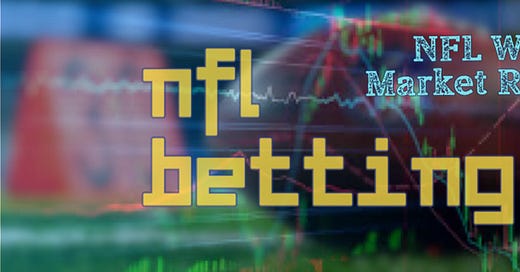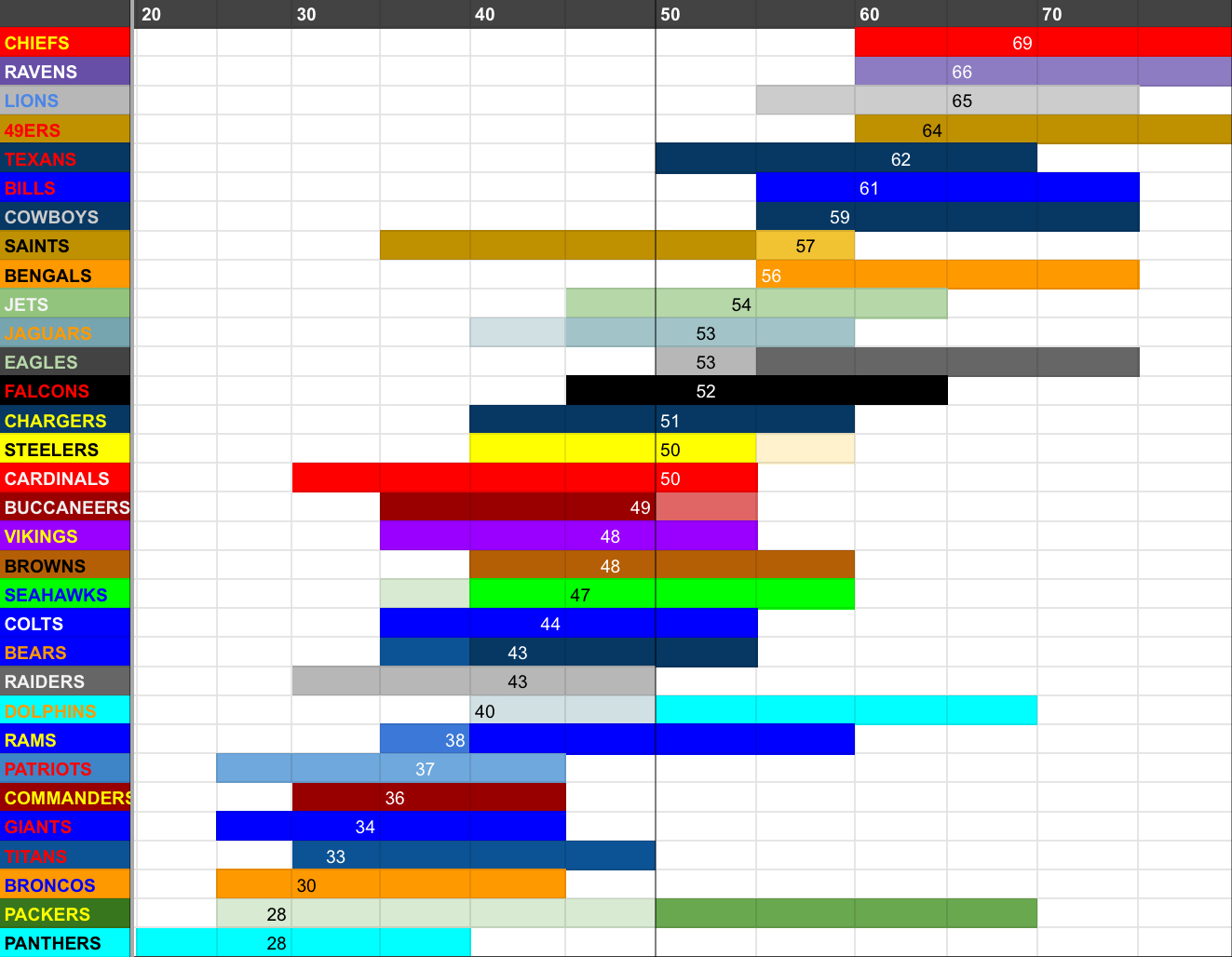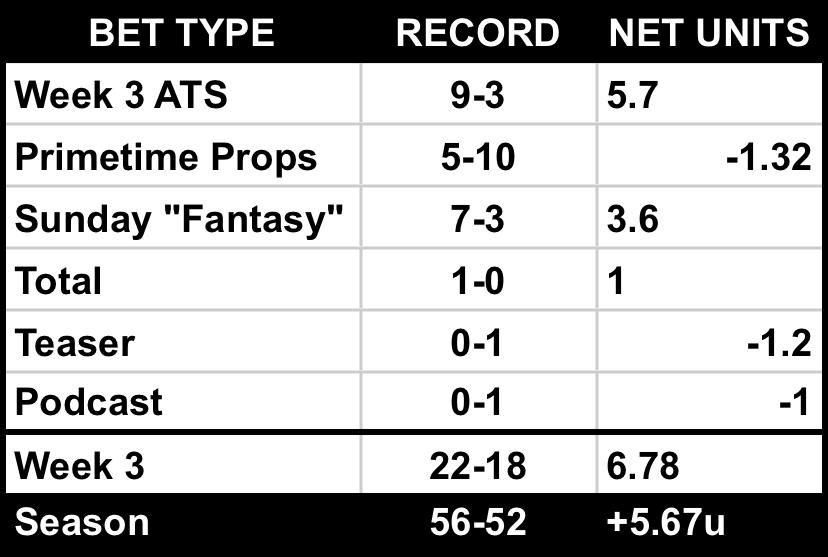Another week of football, another chance for the betting market to overreact to the short-term success or failure of these teams, while also taking its sweet time to raise or drop others.
In a league designed to give each team an equal chance at success, trying to figure out who has a good matchup or who’s in a good scheduling “spot” each week is one thing, but understanding how every team is valued is crucial. If you buy something - the way we do by paying for teams in sports betting - then you better know whether you’re getting a good price or a bad one.
For a breakdown of Week 3 and all the betting takeaways, check out the Tuesday episode of THE WINDOW: Sports betting podcastEstimated market ratings
Before the season, we explained the process of how the betting market takes the first odds offered from sportsbooks about a team’s quality - regular season win (RSW) totals - and translates that into a team rating.
Each game provides a subsequent data point that we receive from oddsmakers and bettors alike - the closing line (the last available point spread to bet before kickoff).
Taking the most recent game’s closing line into account, we adjust every team’s market rating to reflect where they were relative to the rest of the league before the previous week’s games.
These are not power rankings - a largely pointless exercise done for clicks - that simply list each team in a made-up order for readers to argue about.
They are ratings, which allow for the possibility that teams can be perceived to be equal - or have a large gap - amongst the other 31 teams in the NFL. To better understand the chart above, refer back to Week 1’s market rating column. You can argue about them, OR you can just bet against them.
The headliner for our market report came in New Orleans, as the Saints became regarded as a better team than the Eagles for the first time in years. The Eagles fall might not have happened without a Week 2 collapse, and the Saints’ boost might not have happened had the Cowboys not been held in such high regard after Week 1. These moving pieces amounted to Philadelphia getting three points on Sunday. While covering (nor winning) was no guarantee, getting those points left a wider range of winning options for a bet on the Eagles than they should have been provided off of such a short sample size.
The 49ers came off a loss, without the services of Deebo Samuel, George Kittle, and injury-list incumbent Christian McCaffrey, and saw their rating drop just a handful of ticks, from 70/100 to 64. Meanwhile, the Rams were without Cooper Kupp and Puka Nacua, some offensive linemen, and a starting cornerback, and went from 46/100 to 38. San Francisco’s rating didn’t test the bottom of their prescribed range, while Los Angeles’s did. It’s one of many examples of where value could be found in Week 3.
While there was movement for both sides in that NFC West duel, there wasn’t enough in an inter-conference matchup between the Vikings - still being considered below-average - and the Texans - still being regarded as an upper-echelon contender.
If the idea is to bet against a team when they drift up towards a high point of their range, you can see how the Cardinals and Buccaneers would be vulnerable to an ATS loss.
Meanwhile, on the literal other end of the spectrum, the Packers didn’t get much credit for beating the Colts without Jordan Love, as they still were rated well below their standard, in a second start by Malik Willis. With Love expected back this coming week, the Packers should get back to an above-average rating. The current line of Green Bay -2.5 suggests that’s the case.
So why isn’t easy to just win all the bets each week?
Enter the Cincinnati Bengals.
By the standard set with the offseason betting markets, the Bengals are rated at the back end of their range, and, therefore, should be a “bet on” team. What Monday night suggested to us, is that both the Bengals and Jaguars just might be not as good as we expected and their range should shift left. However, both 0-3 squads have good performances against good teams on the road, albeit in a losing cause.
Without Tua Tagovailoa - like the Packers without their starting quarterback - the Dolphins were pushed through the bottom of their range. However, it wasn’t by nearly as much. Even if you didn’t want to assume that Mike McDaniel didn’t have the same Plan B coaching capability as Matt LaFleur, you could see the Dolphins weren’t downgraded in the same way, and the effects of a backup quarterback might mean there’s more room to fall for the Fins.
With three weeks in the books, we can make some adjustments to each team’s range, and continue to be ready for any significant change to their rating each week.
Injury issues look to alter the Chargers’ rating for the coming week, with Justin Herbert and both offensive tackles potentially unavailable against the Chiefs.
Meanwhile, even though Bryce Young is available, we’ll see what upwards adjustment comes for the Panthers with Andy Dalton firing a shot of life into Carolina’s offense against the Raiders. If it’s not enough, the Panthers might be worth a look again, in Dalton’s old stomping grounds of Cincinnati.







